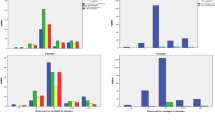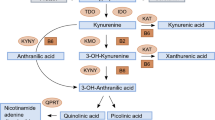Abstract
Background: The study was carried out on the hypothesis that drug addicts would have reduced vitamin E, C and A status which could be influenced by drug habit, sexual practice and lifestyle factors.
Method: Serum concentrations of Vitamin E, C and A of male drug addicts and cohort controls were analysed, and influence of drug habit, sexual practice and lifestyle factors of the addicts on the vitamin status was assessed. The study was conducted among 253 drug addicts who sought detoxification voluntarily during the period of June 1997 to July 1998 at the Central Drug Addiction Treatment Hospital, Dhaka, and 100 cohort control men. Research instruments were questionnaire and blood specimens. HPLC and spectrophotometric methods were used to determine the vitamin levels in sera of drug addicts.
Results: α-Tocopherol (12.60±3.73 compared with 16.3±3.37 µmol/l; t=8.6, P=0.05), ascorbic acid (21.59±10.5 compared with 38.3±13.62 µmol/l; t=10.93, P=0.003) and retinol (1.15±0.39 compared with 1.33±0.30 µmol/l; t=5.28, P=0.048) in the drug addicts were significantly low as compared to those in the cohort controls. Use of multiple illicit drugs for a longer period of time did result in reduced levels of these vitamins. A significant reduction in retinol concentration was noted among the multiple drug users (F(2,250)=3.23, P=0.041). Duration of addiction had a significant linear correlation with the level of reduction in retinol (F(2,250)=3.23, P=0.041) and α-tocopherol (F(2,250)=3.06, P=0.049). Apart from having a significant negative correlation between number of sexual partners and retinol level (F(3,247)=2.65, P=0.049), sexual practice did not have any influence on the vitamin status of the addicts. Occupation did have a significant effect on the ascorbic acid level (F(4,248)=2.46, P=0.046), but other socioeconomic factors like income, age etc did not influence the vitamin E, C and A levels. Body mass index had a positive linear correlation with the vitamins, but it was significant only with vitamin C (F(2,250)=7.06, P=0.001).
Conclusions: These results could have important implications for providing an antioxidant therapy to drug addicts and thus rehabilitating them into normal life. Risk of HIV infection and transmission (if any) could be reduced or inhibited.
European Journal of Clinical Nutrition (2001) 55, 1022–1027
This is a preview of subscription content, access via your institution
Access options
Subscribe to this journal
Receive 12 print issues and online access
$259.00 per year
only $21.58 per issue
Buy this article
- Purchase on Springer Link
- Instant access to full article PDF
Prices may be subject to local taxes which are calculated during checkout
Similar content being viewed by others
References
Allard JP, Aghdassi E, Chau J, Salit I & Walmsley S (1998) Oxidative stress and plasma antioxidant micronutrients in humans with HIV infection Am. J. Clin. Nutr. 67 143–147
Bieri JG, Tolliver TG & Contignant GL (1979) Simultaneous determination of α-tocopherol and retinol in plasma or red cells by HPLC Am. J. Clin. Nutr. 32 2143–2149
Brown KM, Morrice PC & Duthie GG (1997) Erythrocyte, vitamin E and plasma ascorbic acid cone, in relation to erythrocyte peroxidation in smokers and nonsmokers dose response to vitamin E supplementation Am. J. Clin. Nutr. 65 496–502
Califano Jr JA (1998) Substance abuse and addiction—the need to know Am. J. Public Health 88 9–11
Carr DJJ & Serou M (1995) Exogenous and endogenous opioids as biological response modifiers Immunopharmacology 31 59–71
Chandra RK (1997) Nutrition and the immune system: an introduction Am. J. Clin. Nutr. 66 460S–463S
Courssons-Reed ME, Dykstra LA & Lystle DT (1994) Paviovian conditioning of morphine induced alterations of immune status Brain Behav. Immune. 8 204–217
Duggan C, Colin AA, Agil A, Higgins L & Rifai N (1996) Vitamin A status in acute exacerbation of cystic fibrosis Am. J. Clin. Nutr. 64 635–639
FAO (1997) Human Nutrition in the Developing World, ed. MC. Latham FAO Food and Nutrition Series no. 29 277–282 Rome: FAO/United Nations
Himmelgreen DA, Perez-Escamilla R, Segura-Millan S, Romero-Daza N, Tansescu M & Sin M (1998) A comparison of the nutritional status and food security of drug-using and non-drug-using Hispinic women in Hartford, connecticut Am. J. Phys. Anthropol. 107 351–361
Islam SN, Hossain KJ & Ahsan M (2000) Sexual lifestyle, drug habit and sociodemographic status of the drug addicts in Bangladesh. Public Health 114 389–392
Jeng KCG, Yang CS, Siu WY, Lio WJ & Kuo JS (1996) Supplementation with vitamin C and E enhances cytokine production by peripheral blood mononuclear cells in healthy adults Am. J. Clin. Nutr. 64 960–965
Johnson R & Gerstein DR (1998) Initiation of use of alcohol, cigarettes, marijuana, cocaine, and other substances in US birth cohorts since 1919 Am. J. Public Health 88 27–33
Kotler D (1998) Antioxidant therapy and HIV infection: 1998 Am. J. Clin. Nutr. 67 7–9
Lowinson J, Ruiz J & Millman R (1992) Substance Abuse: a Comprehensive Textbook. eds. J Lowinson, J Ruiz & R Millman pp 657–674 Baltimore, MD: Williams & Wilkins
Lowry OH, Lopz JA & Bessey OA (1945) Determination of ascorbic acid in small amount of serum J. Biol. Chem. 160 609–615
Lykkesfeldt J, Loft S, Nielsen JB & Paulsen HE (1997) Ascorbic acid and dehydro ascorbic acid as biomarkers of oxidative stress caused by smoking Am. J. Clin. Nutr. 65 959–963
Marangon K, Herbeth B, Lecomte E, Paul-Dauohin A, Grolier P, Chancerelle Y, Artur Y & Siest G (1998) Diet, antioxidant status, and smoking habits in French men Am. J. Clin. Nutr. 67 231–239
Marcos A, Varela P, Toro O, Lopez-Vidriero I, Nova E, Madruga D, Casas J & Morande G (1997) Interaction between nutrition and immunity in anorexia nervosa: a 1-y follow up study Am. J. Clin. Nutr. 66 485S–490S
Meydani SN, Barklund MP, Liu S, Meydani M, Miller RA, Cannon JG, Marrow FD, Rocklin R & Blumberg JB (1990) Vitamin E supplementation enhances cell-mediated immunity in healthy elderly subjects Am. J. Clin. Nutr. 52 557–563
Morabia A, Fabre J, Chee E, Zeger S, Orsat E & Robert A (1989) Diet and opiate addiction: a quantitative assessment of the diet of non-institutionalized opiate addicts Br. J. Addict. 84 173–180
Morshed SM (1996) Narcotic control bulletin 8 1–70 Department of Narcotic Controls, Dhaka, Bangladesh
National HIV-AIDS (1999) Behavior Change Communication Strategic Implementation Plan for Bangladesh, First Draft Document, National HIV-AID Committee Bangladesh.
Rouveix B (1992) Opiates and immune function: consequence on infectious disease with special reference to AIDS Therapie 47, 503–512
Scrimshaw NS & SanGiovanni JP (1997) Synergism of nutrition, infection, and immunity: an overview Am. J. Clin. Nutr. 66 464S–477S
Solis-Pereyra B, Aattouri N & Lemonnier D (1997) Role of food in the stimulation of cytokine production Am. J. Clin. Nutr. 66 521S–525S
Thomas PT, Bhargana HN & House RV (1995) Immunomodulatory effects of in vitro exposure to morphine and its metabolites Pharmacology 50 51–62
UNDCP (1997) Why world drug report? In World Drug Report, United Nations Drug Control Programme 9–14 New York: Oxford University Press
Varela P, Marcos A, Santacruz I, Ripoll S & Requejo AM (1997a) Human immunodeficiency virus infection and nutritional status in female drug addicts undergoing detoxification: anthropometric and immunologic assessments Am. J. Clin. Nutr. 66 504S–508S
Varela P, Marcos A, Ripoll S, Santacruz I & Requejo AM (1997b) Effects of HIV infection and detoxification time on anthropometric measurements and dietary intake of male drug addicts Am. J. Clin. Nutr. 66 509S–514S
Vasko ME (1992) Drug abuse and dependence In Goth's Medical Pharmacology, eds. WO Clerk, DE Brater, AR Johnson, 13th edn pp 336–353 St. Louis, MO: Mosby Year Book
Acknowledgements
The authors thank the financial support by the Ministry of Science and Technology, the Government of Bangladesh and are also grateful to the Director, Central Drug Addiction Treatment Hospital, Dhaka, Bangladesh for her kind assistance.
Author information
Authors and Affiliations
Corresponding author
Rights and permissions
About this article
Cite this article
Nazrul Islam, S., Jahangir Hossain, K. & Ahsan, M. Serum vitamin E, C and A status of the drug addicts undergoing detoxification: influence of drug habit, sexual practice and lifestyle factors. Eur J Clin Nutr 55, 1022–1027 (2001). https://doi.org/10.1038/sj.ejcn.1601263
Received:
Revised:
Accepted:
Published:
Issue Date:
DOI: https://doi.org/10.1038/sj.ejcn.1601263
Keywords
This article is cited by
-
Evaluation of serum amino acids and non-enzymatic antioxidants in drug-naïve first-episode major depressive disorder
BMC Psychiatry (2020)
-
A Preliminary Study Examining Nutritional Risk Factors, Body Mass Index, and Treatment Retention in Opioid-Dependent Patients
The Journal of Behavioral Health Services & Research (2015)
-
Effect of lipid peroxidation, antioxidants, macro minerals and trace elements on eczema
Archives of Dermatological Research (2015)
-
Investigation of Serum Trace Element, Malondialdehyde and Immune Status in Drug Abuser Patients Undergoing Detoxification
Biological Trace Element Research (2011)
-
Antioxidants in HIV positive children
The Indian Journal of Pediatrics (2008)



